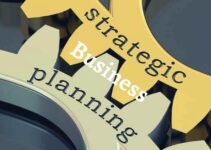Introduction
Businesses and companies have to run various operations with their functional areas like production, marketing, finances, HR, logistics, and others. That’s why it’s important to develop a functional-level strategy. Today, we’ll discuss what is a functional strategy; functional areas, their importance, and examples. As we there are three types of strategies;
- Corporate Strategy
- Business Strategy
- Functional level Strategy
The objective of developing strategies is to measure the performance and results of the goals that you plan to achieve. Top and middle management develop the corporate strategy and apply it to the functional areas.
What is a Functional Strategy?
The functional strategy is the formulation of a daily strategy that helps the company to execute the business and corporate-level strategies. The top management of the company outlines and frames these strategies.
The focus of the functional level strategy is to deal with the operational decisions or tactical decisions of different functional areas like personal, finance, research and development, marketing, and production.
The business strategy provides the framework for these decisions. The strategy developers give suggestions and directions to the functional managers relevant to the plans and policies of the business. The goal would be to implement it successfully.
Functional level strategy guides you on what to do, how to do it, and when you should do it. It’s the proper step-by-step guideline for the functional staff. However, companies divide these strategies into small plans that work relevant to each other.
Operational Strategy vs Functional Level Strategy
Many consider operational and functional level strategy as the same thing. They’re similar in terms of strategic goals and objectives but differ in terms of scope and application.
The operational level strategy tells a company that how it should allocate its resources in order to support its strategic goals and operations. It deals with operational areas of business, improves the efficiency of the production process, and reduces the overall operational cost.
You can derive the functional level strategy from the operational level strategy by integrating various areas.
Areas of Functional Strategy
Some of the main functional areas of the company that involves strategic decision making are as follows;
Marketing Strategy
Marketing strategy comprises all the activities ranging from recognizing the needs and wants of customers and developing products/services to satisfy them. The marketing mix is one of the most significant elements in the marketing strategy. In fact, the marketing mix comprises all the necessary steps that a company should do to attract the attention of customers. Like product, price, promotion, place, people, and process.
Before implementing the marketing strategy; a company should conduct a detailed swot analysis. There are various types of marketing strategies like demarketing, differential marketing, service marketing, concentrated marketing, synchro marketing, relationship marketing, place marketing, direct marketing, augmented marketing, and social media marketing.
Finance Strategy
The financial level strategy comprises various management areas like planning, controlling, utilizing, and acquiring the financial resources of the company. It also includes estimating net worth, dividend payment, working capital management, acquiring assets, making an investment, applications and sources of funds, budgeting, and raising capital.
Human Resource Strategy
The human resource strategy deals with the functionality of the company toward employees’ development in terms of working conditions and more opportunities, so that they could perform better. It means recruiting the best employees for the job and performing other HR activities like industrial relations, employee retention, motivation, development, training, and recruitment.
Production Strategy/What is a functional strategy?
The production strategy comprises functions like supply chain management system, logistic, control, operational planning, and manufacturing system. The main objective of the production strategy is to decrease the manufacturing cost, increase the quantity, and quality.
Research and Development Strategy
The focus of the research and development strategy is to innovate, develop new products, and improve the existing ones. Market penetration, concentric diversification, and product development involve making changes in the existing product and launching the new one. However, some of the main approaches of the research and development strategy are as follows;
- Low-cost producer
- Following the innovative successful product
- Development the new product and becoming the market leader
Importance of Functional Level Strategy
Some of the reasons why the functional level strategy is important are as follows;
Helps Business Operations & Functions
The functional level offers operational assistance in conducting different functional activities. For instance, the main decisions of the finance manager are acquiring other businesses, lowering capital cost, deploying resources, and raising funding for the new projects. Some of his other decisions are treasury management, inventory, payable, factoring, receivable management, and working capital.
Managerial Road Map
The functional level is a need of every company in performing its business activities. Its scope is limited, but it includes relevant detail to the overall business plan. However, its goal is to improve the market position. The functional level strategy should align with the company’s business strategy.
Implementing Grand Strategy
The functional level guides you to develop key areas of your business; personnel, R&D, production, finance, and marketing. It helps you to organize various subunits of the company by performing daily tasks.
Decision Guide
The functional level helps you to put your plans into action so that the company could meet its objectives. It guides your decisions and actions in implementing your strategy into work. However, they explain various contradicting problems and offer guidance to the employees and the operational problems.
Improves Efficiency & Effectiveness
The functional level improves the efficiency and effectiveness of the company in terms of customer responsiveness, innovation, quality, and the company’s operations. Therefore, it’s significant to remember the link of the functional strategy, value addition, low cost, differentiation, competencies, and profitability. It helps you to establish the resources and capabilities of the company in terms of innovation, quality, and efficiency.
Competitive Edge
When a company has better customer response, quality, reliability, and efficiency, then it would have a competitive edge over competitors. The other important advantage the functional level strategy can give is cost reduction.
Example of Functional Level Strategy
Google handled two major complaints in 2017; customers and advertisers. Many advertisers registered complained that the search engine shows company’ ads with questionable content like porn and white supremacists racist. However, the users also complained that search engine is giving them the result of fake news platforms, and they aren’t happy with those websites where their private information isn’t safe. Google addressed the two issues perfectly; first, it gave advertisers more control over their ads to choose the audience of their choice. Secondly, it removed the objectionable content from YouTube.
Conclusion: What is a functional strategy?
After an in-depth study of what is a functional strategy; functional areas of business, its importance, and example, we’ve concluded that a functional level strategy is very important for conducting a company’s operations.

Ahsan Ali Shaw is an accomplished Business Writer, Analyst, and Public Speaker. Other than that, he’s a fun loving person.


